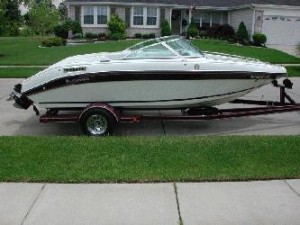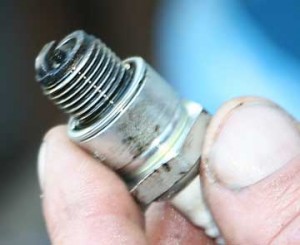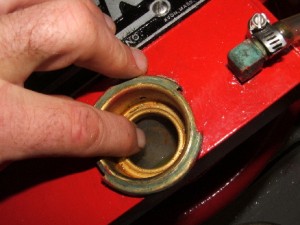Engine Oil Specs: Part One
 For those of us who aren’t certified mechanics or spend every waking moment doing research on our vehicles, choosing the proper parts and products can often be a guessing game. When it comes to your outboard motor oil, however, there is no need to make guesses. There are testing associations in both the US and overseas that work to ensure oils meet certain standards and specifications.
For those of us who aren’t certified mechanics or spend every waking moment doing research on our vehicles, choosing the proper parts and products can often be a guessing game. When it comes to your outboard motor oil, however, there is no need to make guesses. There are testing associations in both the US and overseas that work to ensure oils meet certain standards and specifications.
In Europe, this group is comprised of 13 major manufacturers and known as the European Automobile Manufacturers Association, or the ACEA. Their US counterpart, the American Petroleum Institute (API), includes over 400 corporations and is responsible for producing service categories. In additions to the API, the US also has the American Society of Testing and Materials (ASTM), which set limits on oil quality. Tomorrow we will go into more specifics about each organization and take a closer look at the information they provide.



 Aside from your house or car, a boat is probably one of the biggest purchases that you will ever make. With that in mind, it is important to do some research before dropping thousands on a watercraft. One of the most important things to consider is whether you want an inboard or outboard motor.
Aside from your house or car, a boat is probably one of the biggest purchases that you will ever make. With that in mind, it is important to do some research before dropping thousands on a watercraft. One of the most important things to consider is whether you want an inboard or outboard motor.

 A recent study of outboard motors yielded evidence that quieter motors are also more fuel efficient as well as better for the environment. The test was run on a 1988 Evinrude outboard motor versus a 2008 Evinrude outboard motor. The results of the test were as follows:
A recent study of outboard motors yielded evidence that quieter motors are also more fuel efficient as well as better for the environment. The test was run on a 1988 Evinrude outboard motor versus a 2008 Evinrude outboard motor. The results of the test were as follows:
 Now that we have done a thorough inspection of all of the fastenings on the lower unit, it is time to lubricate the grease fittings. The two primary parts to apply the grease to are the swivel bracket, which is the bearing the motor turns on, and the transom clamp screw. Once this is completed, work the throttle, forward-reverse shift lever and starter cord to identify the moving parts inside the power head; apply grease to all of these components.
Now that we have done a thorough inspection of all of the fastenings on the lower unit, it is time to lubricate the grease fittings. The two primary parts to apply the grease to are the swivel bracket, which is the bearing the motor turns on, and the transom clamp screw. Once this is completed, work the throttle, forward-reverse shift lever and starter cord to identify the moving parts inside the power head; apply grease to all of these components. Yesterday we went over the necessary parts and materials that you will need to tune your outboard motor. Before you begin dissembling your motor, refer to your owner’s manual for specific procedures and recommended parts or
Yesterday we went over the necessary parts and materials that you will need to tune your outboard motor. Before you begin dissembling your motor, refer to your owner’s manual for specific procedures and recommended parts or  While the mass manufacturers of mineral oil tend to stifle this fact, the truth is that synthetic oil performs better than mineral oil in all circumstances. Whether it’s an automobile or
While the mass manufacturers of mineral oil tend to stifle this fact, the truth is that synthetic oil performs better than mineral oil in all circumstances. Whether it’s an automobile or  As all boat owners will tell you, keeping your watercraft in optimal condition is vital to maintaining performance and resale value. Many people find it necessary to bring their boat to a mechanic every time it needs a tune up, but most of the basic adjustments can be made in just a few minutes. Learning a few of the fundamentals of basic boat maintenance will save you time and money in the long run.
As all boat owners will tell you, keeping your watercraft in optimal condition is vital to maintaining performance and resale value. Many people find it necessary to bring their boat to a mechanic every time it needs a tune up, but most of the basic adjustments can be made in just a few minutes. Learning a few of the fundamentals of basic boat maintenance will save you time and money in the long run.